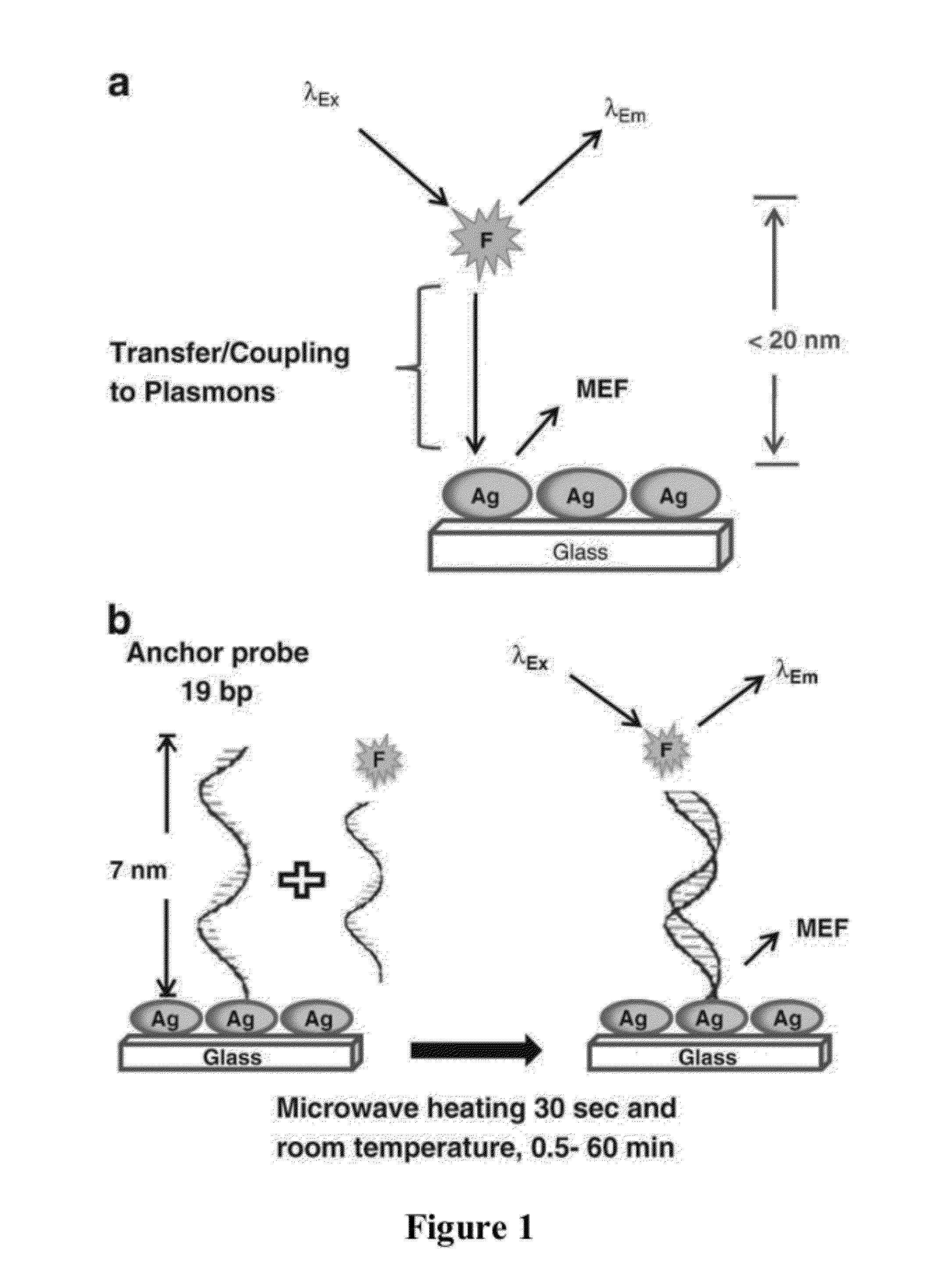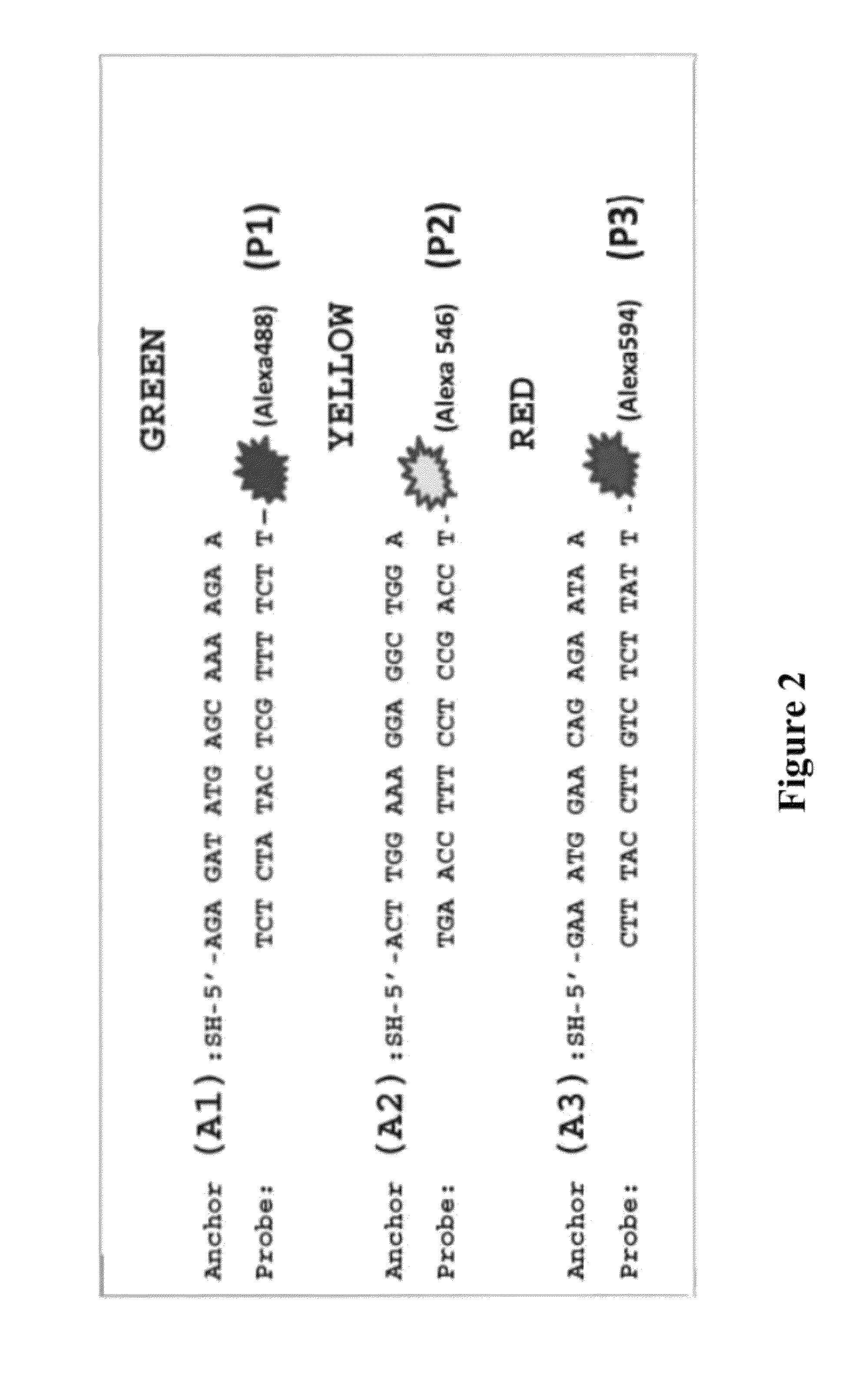Multicolor microwave-accelerated metal-enhanced fluorescence (M-MAMEF)
a metal-enhanced fluorescence, multi-color technology, applied in the direction of fluorescence/phosphorescence, material analysis through optical means, instruments, etc., can solve the problems of limited utility, sensitivity to dna material contaminants, reagents and time to perform experiments, etc., to increase the binding reaction and the timing of such reactions, the effect of enhancing the emission
- Summary
- Abstract
- Description
- Claims
- Application Information
AI Technical Summary
Benefits of technology
Problems solved by technology
Method used
Image
Examples
Embodiment Construction
[0098]The present invention provides for expansion on the Metal-Enhanced Fluorescence (MEF) principles used in DNA quantitation assays and generally referred to as “catch and signal” technology, wherein DNA is caught and once caught in the assay system, a signal is available, are shown in FIG. 1. The MEF effect, i.e. enhancement of a fluorophore's brightness, exponentially depends on the distance between a chromophore and metallic nanoparticle, due to a short-range (0 -50 nm) coupling of a chromophore's excited state electronic system with nanoparticle (NP) plasmons. As a result, only chromophores proximal to NPs increase their emission hundred's -thousand fold. Subsequently, hybridization is not only the event of a specific recognition of a target DNA, but also the creation of the MEF pair (fluorophore —NP plasmons), which enhances the fluorescence signal. Duplex annealing puts a fluorescent label on a short (˜7 nm) enough leash, relative to a NP, thereby placing the label in the p...
PUM
| Property | Measurement | Unit |
|---|---|---|
| distance | aaaaa | aaaaa |
| distances | aaaaa | aaaaa |
| distances | aaaaa | aaaaa |
Abstract
Description
Claims
Application Information
 Login to View More
Login to View More - R&D
- Intellectual Property
- Life Sciences
- Materials
- Tech Scout
- Unparalleled Data Quality
- Higher Quality Content
- 60% Fewer Hallucinations
Browse by: Latest US Patents, China's latest patents, Technical Efficacy Thesaurus, Application Domain, Technology Topic, Popular Technical Reports.
© 2025 PatSnap. All rights reserved.Legal|Privacy policy|Modern Slavery Act Transparency Statement|Sitemap|About US| Contact US: help@patsnap.com



